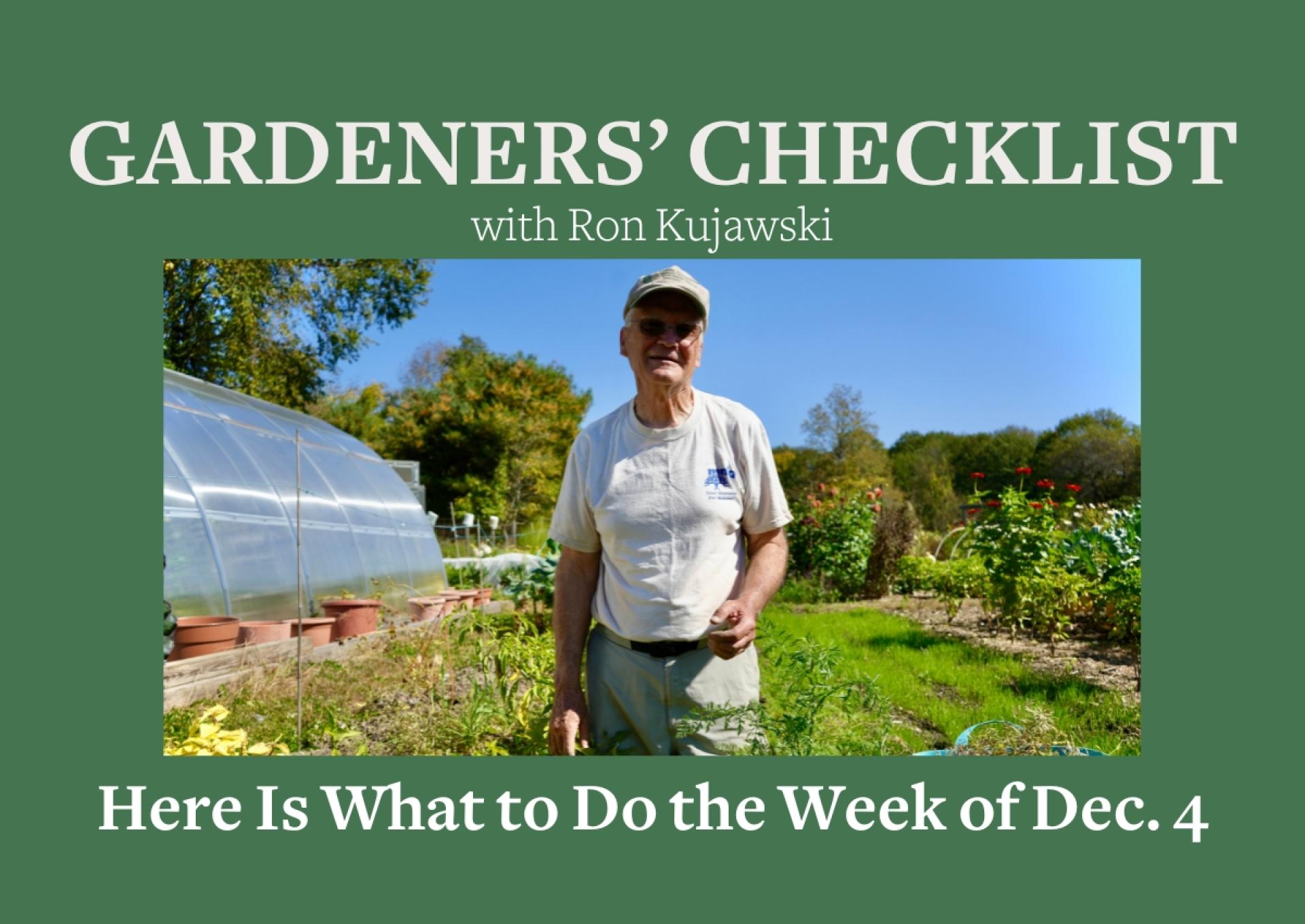You are here
Gardeners Checklist: Here Is What to Do on the Week of Dec. 6.
Gardeners Checklist: Here Is What to Do on the Week of Dec. 6.
By Ron Kujawski
• Allow plenty of space between herbs plants growing on a windowsill or under lights. This not only lets light reach the lower leaves, but helps to prevent insects, mites, or diseases from spreading from plant to plant. Potted herbs which grew outdoors this summer should be given special attention; check them often for evidence of pest and disease problems.
• Isolate any houseplants or potted herbs found to be infested with insects or mites. Mealybug is one of the more common pests of plants growing indoors. Look for white cottony masses on the undersides of leaves and adjacent to the veins. Light infestations of mealybug can be taken care of by dabbing at the bugs with a cotton swab that has been dipped in alcohol.
•Look for white crust – also known as white crud in some circles – on the surface of soil of potted houseplants. This crud….er, crust is made of soluble salts. The origin of these soluble salts is fertilizer and/or water applied to the plants. As moisture evaporates from the soil surface, deposits of these salts appear (think Great Salt Lake). Salts can be damaging to the plants. So get rid of this crust by removing the top inch or two of soil from the pot. Replace this with fresh soil of a similar type.
• Don’t bother with leaf shine products. Yes, they can leave leaves shiny but they can also interfere with normal leaf functions by clogging leaf pores. So, leave leaf shines on the shelf. (I sometimes get obsessed with alliteration.)
• Be aware that some of the more common plants used for holiday decorating are poisonous or have poisonous parts. Among these are: holly (the red berries), Jerusalem cherry (entire plant), mistletoe (the greenish white berries), and yew (leaves, bark, and seeds). If you run into a problem with someone having eaten one of these (be especially vigilant with little children) call the Regional Center for Poison Control and Prevention: 1-800-222-1222.
With just a few weeks to go before Christmas, panic is starting to set in for those who have yet to complete, or in my case, start their Christmas shopping. Fortunately, most of the people on my gift list are gardeners. Gardeners are clearly the easiest to shop for. Give a gardener a Cape Cod weeder, or an amaryllis bulb, or a decorative pot, or a bag of potting soil and they will be happier than a goose in a cornfield. (Personally, I’m hoping for a bag of moo doo.) Another fail-proof gift for gardeners is a book, a gardening book of course. There are so many really good books on a great variety of gardening subjects. One that I am a bit shy about mentioning is “Week by Week Vegetable Gardener’s Handbook.” It was written by my daughter and me. With the resurgence in vegetable gardening, this book is intended to guide new as well as veteran gardeners through the growing season. I’ve been reluctant to mention the book but as a friend said “You don’t write a book and keep it a secret.”
Ron Kujawski began gardening at an early age on his family's onion farm in upstate New York. Although now retired, he spent most of his career teaching at the UMass Extension Service. He serves on Berkshire Botanical Garden’s Horticulture Advisory Committee. His book, Week-by-Week Vegetable Gardener’s Handbook, is available here.
Help Our Garden Grow!
Your donation helps us to educate and inspire visitors of all ages on the art and science of gardening and the preservation of our environment.
All Donations are 100 percent tax deductible.



